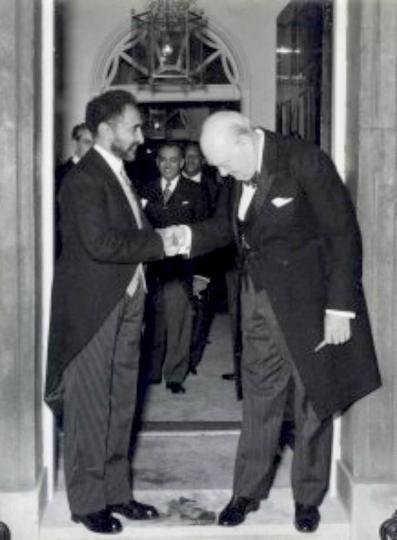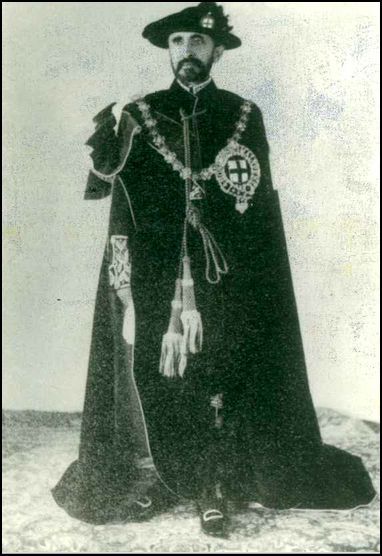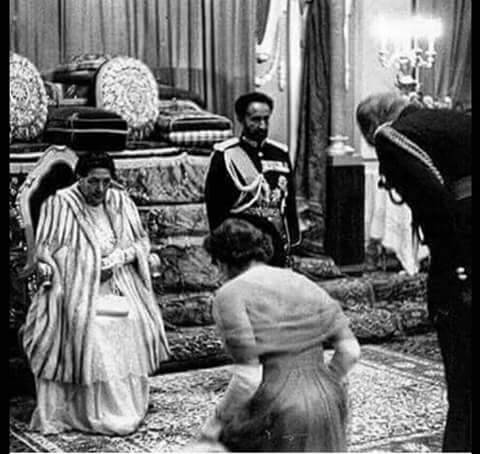Category Archives: Rastas
SESOSTRIS THE GREAT, THE EGYPTIAN HERCULES.
By Samuel David Ewing
Pg.225. “Eratosthenes ( ? ) ( From Syncellus ) App.II Fr. 39 King of Thebes 34. The thirty fourth King of Thebes was Sistosichermes, “Valiant Heracles,” ( Sistosis or Sesortosis, “Valiant Hermes or Heracles” ), for 55 years. Anno Mundi 3791.” From Manetho, With An English Translation By W.G. Waddell, published by Harvard University Press , London 1940, 1948.
Sesostris the Great’s name has been translated in various ways from the Greek, Roman, and English translations as Senusret I, Senwosret I, Sistosis, Sesortosis, Sesoothis, and Sen-Wos- Ret I. Sen-Wos-Ret means “son of Wosret.”
Wosret is the goddess who was known as a form of Hathor in Egypt. Wosret ruled over precious metals, wealth, mines, and treasures. The ancient black African ruler, Sen-Wos-Ret I knew Her to be his patron deity during his successful military campaigns, and she was the motivating ideal behind his mission to conquer the entire world.
With that in mind I will now list some of his accomplishments:
1. He used prisoners of war for an extensive building projects throughout Egypt.
2. He was worshiped as a living god during the 12th Dynasty of Egypt.
3. Sen-Wos- Ret I began a series of victorious military expeditions against the Asiatics, Libyans, and various nomads ( Bedouins ) who threatened the people of Egypt. He became ruler of Egypt in 1971 B.C. and ruled until 1928 B.C.
4. He enforced loyalty and discipline in Egypt, giving the governors responsibility for the management of the nomes ( towns ).
5. He was the first Egyptian king to rule over Ethiopia, including lower Nubia, and use its gold mines to add to the empires wealth.
6. Strabo, XVII reports that Sen-Wos-Ret I had built a canal starting from the Nile River to the Red Sea.
7. He ordered the rebuilding of the Temple of Amen at Ipet-sut ( Karnak ) in stone.
8. He erected red granite obelisks to be placed at Heliopolis ( Northern Anu ).
9. He led a great expedition to Punt on the Somali Coast.
10. He had built the largest pyramid in the history of the Middle Kingdom Period of Egypt’s history. The pyramid was 352 ft. tall.
11. He protected Egypt’s borders by winning victories in a succession of military conquests to the South to gain the benefits of the economic mechanisms in Lower Nubia and to continue trading with the nations of West Asia.
12. The ancient Greeks called him “Heracles Kharops” ( Heracles the Flashing-Eyed ), “Kekrops”, and “Sistosichermes Valiant Hercules.” He founded and built Athens, Greece, considered to be the greatest center of culture, academics, art, and the sciences in ancient Greece. This city is credited to being the catalyst for European – based civilization ( the West ) and originated with the black king Sen-Wos- Ret I known as Heracles Kharops.
13. He was the second ruler of the 12th Dynasty, he ruled for 34 years, and built 13 fortresses from Egypt to the Second Cataract. He made use of the harvest from Wadi Hammamat for food supplies.
14. He completed the construction of the Wall Of Princes. He founded colonies in the areas of the Danube River, the Black Sea, Strabo, Book III records that Sen-Wos- Ret I conquered Palestine, Syria, Mesopotamia, Armenia, Iberia, Colchis, and ancient Hindu writings record his invasion of India.
Numerous sources indicate that he was the first man to conquer the entire world centuries before Alexander the Great was born, that this has been a point of controversy among scholars and archaeologist, however evidence is being discovered that verifies the claims of ancient writers.
The Ancient Aztecs
We Wish You A Rasta Christmas
4400 year old Tomb found in Egypt
T. Miles: So what happened to the original swarthy black Britons? – A ship called the “VETERAN”
So what happened to those original swarthy black Britons?
In 449 AD the Northern Germanic invasion of Briton pushed the surviving British population West to Cornwall, Wales and Ireland and North to Scotland.
In 1688 AD the Stuart king James II was replaced by parliament with William III and Mary II. They produced no children and succession to the throne got complicated. The Irish and Scottish were later recruited by another Stuart cousin born in France known as “Bonnie Prince Charlie” to help him capture the British throne.
This war was called the Jacobite rebellion. When they lost that battle many Scots and Irish were rounded up by the English and imprisoned and later deported to the Caribbean. A close inspection of these ships logs describe these prisoners.
For example on the 5th of May 1747 a ship called the “VETERAN” captained by John Ricky, left Liverpool with Irish and Scottish prisoners. The ships log describes a percentage of these prisoners as being Brown skinned, swarthy or Black.
The prisoner numbered 132 on the “veteran list” was said to be George Hume a writer in the legal profession. He was aged 30 from Edinburgh and described as a “black man”. From what I can tell he was the most educated prisoner on the ship.
Prisoner 1519 Andrew Langer numbered 86 on the veteran list was described as a 40 year old, dark complexioned 5 foot 6 inch tall weaver from Dublin.
Prisoner 3314 James Urquhart, numbered 78 on the veteran list was described as an 18 year old with a brown complexion and said to be a 5 foot 5 inch Labourer from Aberdeen.
Prisoner 2602 James Neilson from Aberdeen was entered in as swarthy complexioned. Whereas Prisoner 1138 Charles Grant from Abernethy was listed as brown skinned, Prisoner Dunbar James from Moray was described as black.
Prisoner with Veteran List Number 96 Donald McDonald from Edinburgh was described as swarthy. James Reed with Veteran List Number 122 was described as prisoner with dark visage, so also was Prisoner 2797 George Reed from Banff who was described as dark. There were several more dark skin and swarthy Scottish and Irish prisoners on that ship; and a quick look through this list will quickly provide any researcher the correct perspective.
These prisoners were originally captured on the 30th December 1745 and imprisoned in York castle, Lincoln castle among other locations.
The ship sailed near Antigua on the 28th of June 1747. However for reasons unspecified the prisoners were taken by the Diamond privateer Paul Marsale and released in Martinique on the 30th June 1747.
See link below for more information: Black Scots
http://www.jacobites.net/uploads/2/4/3/9/24396590/list_of_prisoners_transported_on_veteran.pdf
Ancient Civilizations of (North America) Part 1
The Egyptian Papyrus of Anana – Rasta Livewire Sprituality Corner
[Anana was chief scribe and king’s companion to Jentle Leti II about 1320 B. C. Behold then, words that echo down from 3,000 years, addressed directly to YOU.}
“Behold! is it not written in this roll? Read, ye who shall find in the days unborn, if your gods have given you the skill. Read, O children of the future, and learn the secrets of the past, which to you is so far away, and yet in truth so near.
“Men do not live once only and then depart hence forever; they live many times in many places, though not always in this world. That between each life there is a veil of darkness…
The doors will open at last, and show us all the chambers through which our feet wandered from the beginning.
“Our religion teaches us that we live on eternally. Now eternity having no end, can have had no beginning–it is a circle; therefore, if one be true, namely that we live on forever, it would seem that the other must be true also: namely, that we have always lived.
To men’s eyes God has many faces, and each one swears that the one he sees is the only true God. Yet they are all wrong, for all are true.
The Spirit should not be judged by the body or the god by his house.
All gods send their gift of love upon this earth, without which it would cease to be. My faith teaches me more clearly perhaps than yours, that life does not end with death, and therefore that love, being life’s soul, must endure while it endures.
The strength of the invisible tie will bind two souls together long after the world is dead.
The spirits or souls of one incarnation possibly may meet again in another incarnation, and may be drawn together as if by a magnet but for what cause neither knows.
Man comes into being many times, yet knows nothing of his past lives; except occasionally some daydream or a thought carries him back to some circumstance of a previous incarnation. He cannot, however, determine in his mind when or where the circumstance occurred only that it is something familiar. In the end, however, all of his various pasts will reveal themselves.”
High Priest Anana




